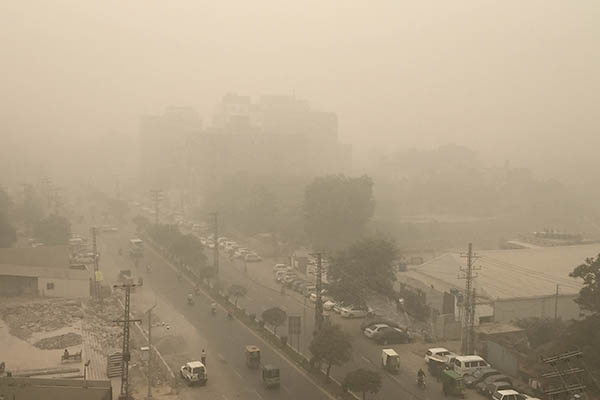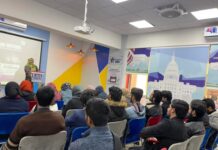I H sheikh
LAHORE: Like in the past few years, smog is again tormenting the people these days with the government looking at the menace like a silent spectator.
The only solution to this health hazard that has become a regular annual feature in Punjab during the October-November period appears to be good rain and strong westerly winds. Till it happens, we are bound to helplessly allow smog or intense air pollution badly affect our health.
The government on its part, thinks its duty to merely announce cosmetic steps like imposing Section 144 to stop burning of refuse or crop residue or closing down factories emitting untreated smoke.
The so-called measures become history as soon as the air cleaning winter rains start, erasing from the government slate the word smog. The realization that this phenomenon is a very serious issue that needs to be tackled with long term solutions is also pushed to the cold storage.
Doctors link particulate air pollution to heart disease, stroke, chronic obstructive lung disease, lung cancer, premature birth, dementia, eye problems, skin cancer and adverse effects on brain development.
Environment activists and medical practitioners who held a demonstration outside Jinnah Hospital on Thursday, quoted The Lancet (a health journal) saying that nearly 135,000 people, majority of them children, die annually in Pakistan because of air pollution.
Smog began to blanket Lahore and other cities mainly in Punjab a few years ago. The government at that time, made people believe that burning of rice crop residue mainly by the Indian Punjab farmers was the major contributor.
Weather pundits said that smoke from the adjacent Indian Punjab fields slowly permeated Pakistani side because of calm wind. It became smog in league with low temperature and high relative humidity in the air.
Thanks to the censure by people and media, the government later admitted that burning of used tyres and plastic refuse by nearly 350 steel re-rolling factories alone on G T Road in the Wagha sector and dust raised by the Yellow train project of Shehbaz Sharif were others factors. Brick kilns too were added to the list.
The so-called steps taken to minimize the impact of smog became a history as soon as strong westerly wind and winter rain blew away smog.
Development of smog this year is delayed due to extended monsoons and westerly rains in October. It intensified in November, but was again cleared by rains. The worst came on November 6 when Lahore was filled with suffocating smoke in the evening. The Met department and the Environment Protection Department said it was emanating from the Indian side where farmers were burning of crop residue at a large scale.
To the sheer luck of the people, rain and strong westerly winds tackled the smoke during the night and the next day. One can imagine what would have happened if there was no Divine help.
Notwithstanding the claims by the Punjab government, it has been established by independent sources that smoke from the burning fields on both sides of the border is not the sole contributor to smog. It can be taken as an additional contribution at the most.
In its report prepared on the request of the Punjab government, United Nations Food and Agriculture Organization (FAO) states: “The sectoral emissions inventory of Punjab shows that the major portion of total air pollutants emitting form the transport sector holds 43 per cent share, followed by 25 per cent from the industrial sector and 20 per cent from agriculture.
Ironically, daily Air Quality Index reports by the Environment Protection Department too have been challenged by the US Consulate Twitter on the air pollution. The consulate figures appear much higher than the ones by the department, making people mistrust the government with regard to its seriousness in saving them from smog.
Smog or air pollution needs to be handled with regular measures like motivating farmers not to burn their crop residue especially in the low-rain October-November period. They must also be taught in adopting alternate measures to clear their fields of the crop stubble. Introducing machinery that can help clear the crop residue at subsidized rates can be another step.
There is a dire need to minimize domestic contributions to smog. The Punjab government can under its environment laws, compel factory owners to install treatment plants. Imposing heavy fine on those burning used tyres and plastic to run their factories can be another deterrent.
Punjab had last year introduced zig-zag brick kiln technology with the help of World Bank. Many are learnt to have switched over to it, and the rest should immediately be asked to follow the suit. The carrot and stick policy needs to be used here.
The federal government on its part should start importing good quality fuel for vehicles on Pakistani roads. It should also raise the issue of crop residue burning by the Indian farmers at international level.
Planting trees and stopping converting green areas into structures of brick and mortar can be yet other measures. Can we expect the required seriousness from the government?





